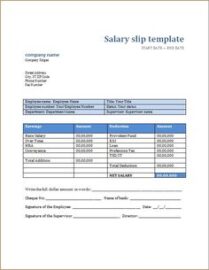Intrinsicly evisculate emerging cutting edge scenarios redefine future-proof e-markets demand line
Gallery Posts






Working Hours
| Mone - Fri: | 09:00 - 06:00 |
|---|---|
| Saturday: | 09:00 - 12:00 |
| Sunnday | 09:00 - 04:00 |
| Monday | 09:00 - 05:00 |
If the asset account had a credit balance or the CA account had a debit balance, this would indicate an error in the journal entries. For example, an asset was purchased by a company for $100,000 – that is, the historical cost of the asset was $100,000 – and its contra asset counterpart has a balance of $30,000. Note that the asset account balance represents the purchase price of the asset in question, also known as its historical cost. Contra accounts act like regular accounts on the balance sheet but have a unique purpose.
Allowance for Doubtful Accounts pairs with the Bad Debts Expense account when doing adjusting journal entries. A delivery van is purchased by a business to use in delivering product and picking up materials. The company uses Straight-Line Depreciation to track the loss of value of the asset over time. Contra accounts help maintain the accuracy of financial records, provide transparency in reporting, and allow for proper tracking and analysis of specific transactions or events. A contra account is an account used in a general ledger to reduce the value of a related account when the two are netted together.
BART Board Votes to Oppose Bill That Would Decriminalize Fare ….
Posted: Fri, 28 Jul 2023 21:46:02 GMT [source]
Contra asset accounts include allowance for doubtful accounts and accumulated depreciation. Contra asset accounts are recorded with a credit balance that decreases the balance of an asset. A key example of contra liabilities include discount on notes or bonds payable. There are four key types of contra accounts—contra asset, contra liability, contra equity, and contra revenue. Contra assets decrease the balance of a fixed or capital asset, carrying a credit balance. Contra revenue accounts reduce revenue accounts and have a debit balance.
If the related account is a liability account, then a contra liability account is used to offset it with a debit balance. Thus, the natural balance of a contra account is always the opposite of the account with which it is paired. Contra accounts are essential in business and finance due to their role in accurate financial reporting and assessment. These accounts carry a balance that is opposite to the normal account balance, providing a more precise net balance to reflect a company’s financial health. This is particularly important for compliance with accounting principles and in maintaining transparency with investors, creditors and other stakeholders.
A contra account is a general ledger account that offsets the balance of a corresponding account with which it’s paired. If you debit the contra account, ensure that you offset the related account with a credit balance. In essence, contra accounts allow you to report your firm’s gross and net amounts.
Make sure that you report contra accounts on the same financial statement as the related accounts. If you’re the one managing your company’s books of accounts, be sure to report the contra account on your financial statement on the line item directly beneath the main account. Allowance for uncollectible accounts, or allowance for doubtful accounts, is one of the most common contra current asset accounts.
As someone with many years of experience (and the horrifying stories of rats streaming up through the toilets of newly built homes to prove it), he knows that the key to controlling rodents is access. Until now, the labor and expense involved in attaining one of the product’s active ingredients had also been a challenge. Used in traditional Chinese medicine, triptolide is derived from a rare plant called Thunder God Vine that grows in the country’s mountains and is mostly harvested by hand. Each plant produces so little triptolide that, in the region, the substance is worth 15 times its weight in gold.
The difference, which is $500, is thus listed as a discount on bonds payable and is debited to the contra liability account “discount on bonds payable.” The contra asset account Accumulated Depreciation is deducted from the related Capital Assets to present the net balance on the parent account in a company’s balance sheet. Some of the most common contra assets include accumulated depreciation, allowance for doubtful accounts, and reserve for obsolete inventory. In bookkeeping, a contra asset account is an asset account in which the natural balance of the account will either be a zero or a credit (negative) balance.
Simply hit Control + N under the Chart of Accounts or Edit, then click New (to create a new account). For example, when a line item on your balance sheet presents the balance of accounts receivable, report the value of allowance of uncollectible accounts below the accounts receivable line. Be sure to enter the contra account on the opposite column of the account they’re offsetting. If contra assets appear in the credit column, record contra liabilities on side. With contra equity accounts, you reduce the number of outstanding shares you list on your company’s balance sheet.
They are also crucial for internal management to make informed business decisions. Contra accounts serve an essential role in financial management and accounting as they provide a more nuanced and precise representation of a company’s financial health. Their primary purpose is to hold and offset the value of a related account, enabling businesses to track adjustments to their financial statements without altering the original account balance. As a result, financial professionals can separate increases and decreases in the same primary account, offering an in-depth view of each account’s activities and illuminating areas of notable growth or decline. For instance, suppose a company creates an allowance for doubtful accounts, a common variant of a contra account. This account contains deductions against accounts receivable, thereby indicating the possibility that some customers might not pay their bills.

In a sales returns and allowances contra revenue account, you offset the balance in the sales revenue account. When the contra account reads $500 and the normal credit balance is $100,000, then your net sales are $99,500. This indicates that out of $100,000 sales, your customers return goods valued at $500.
For example, a grocery store displays advertisements for a national brand in its weekly flyer. The national brand gives the grocery store cash, reducing the overall cost of printing the flyer. Contra accounts help provide more accurate financial information by separating certain items and highlighting their impact on the overall financial position.
A contra account is used to record adjustments and transactions that have an opposing impact to report the true value of a firm’s financial statements. atp generation from adp gene ontology term are commonly found on general ledgers where all of a business’s accounts and transactions are organized on a master list. The contra account is used to report the correct assets while preserving the transactions and balance of the relating account. The most common contra assets are accumulated depreciation and the allowance for doubtful accounts.
Sometimes, both accounts can be written in a single line if they don’t represent a large portion of the assets. In case the CA account is not listed in the balance sheet, it must be listed in the footnotes of the financial statement for the users to be informed. A contra asset (CA) account is an account in the balance sheet that offsets the balance of a regular asset account. A contra expense account is an account used to reduce the amount of an expense without changing the balance in the main expense account. Examples of contra expense accounts include Purchase Returns, Purchase Discounts, and Advertising Reimbursements. Of that amount, it is estimated that 1% of that amount will become bad debt at some point in the future.
For example, the debit will be to the expense account in an estimated uncollectible amount from a credit sale. The credit will be to the asset account or allowance for doubtful accounts. Contra revenue accounts show the deducting adjustments to gross revenue or producing net revenue. Sales returned for a refund are posted to the contra account to reduce gross revenue or return on sales.
Treasury stock and owner’s drawing account are examples of contra equity accounts. However, some asset accounts need a negative counterpart to reduce the balance of that account. The debit balance of the asset account and the credit balance of the contra asset account determine the net value of the asset. Accounts receivable is rarely reported on the balance sheet at its net amount. Instead, it is reported at its full amount with an allowance for bad debts listed below it. Maybe more importantly, it shows investors and creditors what percentage of receivables the company is writing off.

Definition of Contra Asset Account A contra asset account is an asset account where the account balance is a credit balance. It is described as “contra” because having a credit balance in an asset account is contrary to the normal or expected debit balance. Inventory obsolescence is an expense account, while the allowance for obsolete inventory is a contra asset account, which aims to reduce the inventory valuation on your balance sheet. Your bank account, the inventory you currently stock, the equipment you purchase, and your accounts receivable balance are all considered asset accounts.
The amount on the equity contra account is deducted from the value of the total number of outstanding shares listed on a company’s balance sheet. The balance in the allowance for doubtful accounts is used to find out the dollar value of the current accounts receivable balance that is deemed uncollectible. The balance sheet shows the amount in the asset section underneath the accounts receivable.

You may not need to use contra asset accounts right now, but as your business grows, using contra asset accounts will likely become a necessity. The accumulated depreciation account is perhaps the most common contra asset account used by business owners. The purpose of a contra account is to accurately report value of operating performance and assets for a firm. A contra account is an account that records events like adjustments and transactions that are having an opposite effect on a relating account’s true value on the firm’s financial statements. If we record those events within the relating account, we risk losing information that is relevant to analyzing performance. For example, if your business has accounts receivable of $50,000 and an allowance for doubtful debts account totalling $5,000, the net accounts receivable is $45,000.